Don't wanna be here? Send us removal request.
Text
Multicultural Blog #3
Bree Newsome:
Bree Newsome is a political activist focused on American politics and structural racism. She received a lot of media attention in 2015 when she climbed the flagpole of a statehouse and removed a confederate flag from it. This wasn’t just a spur of the moment decision, as it came after the murder of nine black churchgoers at the hands of a mass shooter. Debate had swirled after the hate crime as to the removal of the flag, before Newsome and fellow activist, James Tyson, put an end to it.
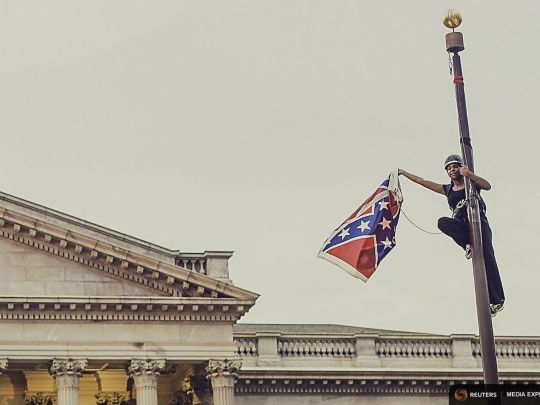
Photo Credit: Vox
On social media, Newsome keeps up with social justice. Because of recent events with Israel and Palestine, Newsome has been advocating for the Palestinian people. On her Twitter account, she has renamed her name to “END ALL COLONIALISM, FREE PALESTINE.” She has called upon the end of imperialism, saying “Bring everything to a standstill if we must. How can we allow this global violence to continue, especially as people living within the heart of empire?”

Photo Credit: WPR
As media of the Palestinian people’s struggle is shared, I think of words from Suken and Cartwright’s text, Practices of Looking. “The role of images in providing views of violence, and of voyeurism and fascination with violence, is countered by a history of using images to expose the devastating aspects of violence.” I feel that the images we have been seeing come out of Gaza have been used to show the perspective of those in Gaza. Newsome continues to share stories of the struggles of the Palestinian people, along with videos and images coming out from there.
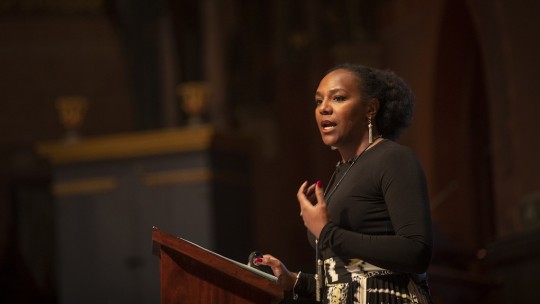
Photo Credit: Cornell Chronicle
Alongside this, Newsome continues to fight against white supremacy, harkening back to her initial rise to mass media attention. “There’s just no way to understand the modern, colonized world without looking through the lens of white supremacy…” she shares, which reminds me of Richard Dyer’s words in On the Matter of Whiteness, “The assumption that white people are just people, which is not far off saying that whites are people whereas colors are something else…” further saying, “…how amazed and angry white liberals become when attention is drawn to their whiteness, when they are seen as nonwhite people as white.” What I think connects these two is the idea that white people believe they don’t live in a world built up for white people, and refuse to accept the structural systems at play that prop them up in life.
0 notes
Text
Multimedia Blog 2
“I’ve heard a lot about you, Dolemite.” Is a phrase often spoken within The Human Tornado. Dolemite, the main character of the film, is known around town and beyond, his name has become legend- he’s cool, fierce, sexy and dangerous. Despite Dolemite’s use of violence, he is looked on by the community within the film as a beacon of hope, which provides an interesting spin to a lot of the roles African-American actors were receiving in films resting under the blaxploitation genre, with many playing individuals who glorify low-life activities. (https://www.britannica.com/art/blaxploitation-movie)
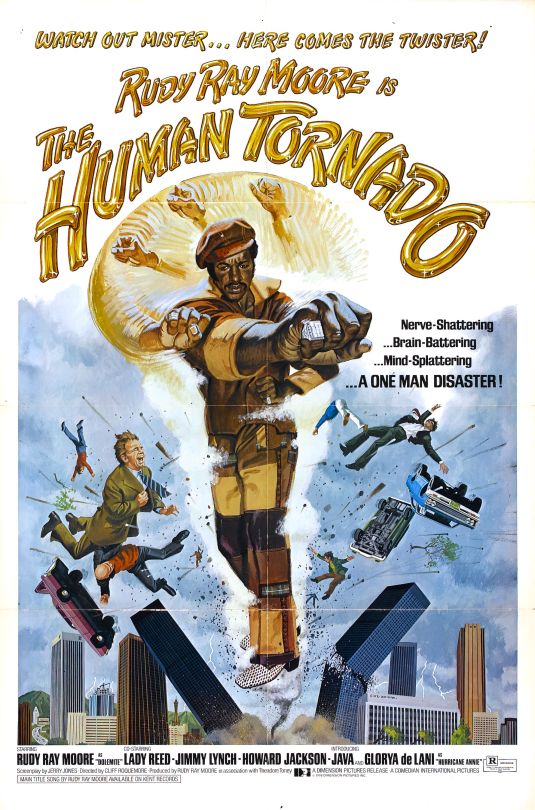
There is a lot of power behind an image, and movies are unlike any other image in how they can sway an audience. Packed in with twenty-four images every second, Cinema has the potential to inform, explore, and inspire conversation. Rudy Ray Moore’s Dolemite character is used to call attention to the racism faced at the hands of law enforcement, but at the same time, shows the audience just how they can fight back against the cruel and unjust people who have power. It may just be fun escapism but I think through humor and action The Human Tornado opens up the conversation on law enforcement and the struggles of the black community. In a lighter way, I think it covers what Sturken and Cartwright are saying in Practices of Looking with “The role of images in providing views of violence, and of voyeurism and fascination with violence, is countered by a history of using images to expose the devastating aspects of violence.” That although the film is light, funny, and doesn’t take itself too seriously, it still using the violence of law enforcement against the black community to expose a glaring problem within real life.

The Sheriff of the film is a great example of what the text Who Invented White People by Gregory Jay was getting at. A racist, delusional maniac, he operates simply on revenge. After finding his wife in bed with Dolemite, he orders both of them to be killed, but only is successful in murdering his wife. Dolemite gets away, so the sheriff then pins the murder on him. On the outside, to unknowing characters of the film, he is simply a man seeking justice for his slain wife, but we know that isn’t true. He’s taking revenge on a man who hurt his masculinity and humiliated him.
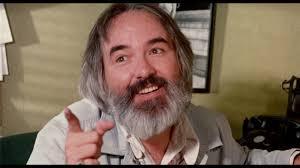
His racist motivations are close to the surface, however, with other law enforcement officials calling him out on it. At the core, the Sheriff is a representation of the cruel and wicked racism that black people have faced, ultimately defeated by Dolemite. He received joy in putting down those of a different skin color. As Gregory Jay puts it, “Beyond the abstract words of law and legislation, real people continued to carry with them the history of racism, whether as victims of its horrors or as beneficiaries of its privileges.”
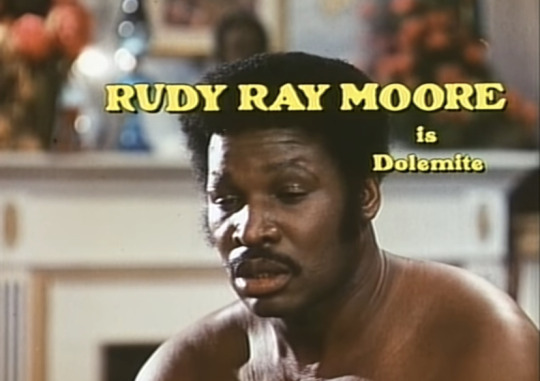
0 notes
Text
Multimedia Blog 1
The Curse is a new show by creators Nathan Fielder and Benny Safdie about the creation of a new reality tv-show gone haywire. The initial premise, although comedic, takes a dark turn with the introduction of a “curse” which seems to have an impact over everything, whether the curse is real or not.
youtube
On the surface, it provides a satire of reality tv stars and productions, exploring the artifice that comes with television, but dives into deeper social issues along the way. One major example relating to Multicultural America is the White Privilege Checklist by Peggy McIntosh. The two lead characters, Asher and Whitney are both white and wealthy people, which provides a strong contrast to the working-class and indigenous communities around them. The premise of the show relates directly to point three, that the reader can turn on the tv and see someone of their race. Home improvement shows are famously populated with Caucasian couples, a trope The Curse plays with. The main characters operate as acknowledging their privileges and choosing to use them to benefit the local community. But all while they say they are aware of their privileges, and try to benefit the community, they simply contribute to the exploitation of indigenous land and to gentrifying this place.
The exploitation of Indigenous land in The Curse by the hands of the lead characters brings to mind segments of Aleta Ringlero’s Prairie Pinups. In relation to the pinups that are the subject of Ringerlo’s text, they say “They make the viewer uncomfortable, and a general tone of reticence towards the prairie pinups.” In episode two of The Curse, the leads take a local artist out to dinner, hoping to use her artwork in their tv show. They wine and dine her to exploit her for their own monetary gain. The situation is uncomfortable, with the viewer being plainly aware of the business deal at play, presented with long takes of uncomfortable silence.
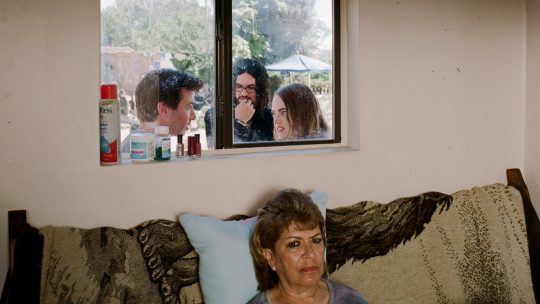
Like what Ringerlo said, these images in the show are made to make the viewer uncomfortable, which might not have been the original intention of the pinups, but is the historical context brought upon through our knowledge of the exploitation of Native people. The tone of the show is restrained, letting the awkward and uncomfortable moments shine through, letting the audience decide if our characters are knowledgeable of their exploitation and white privilege. The Curse judges from afar.
1 note
·
View note